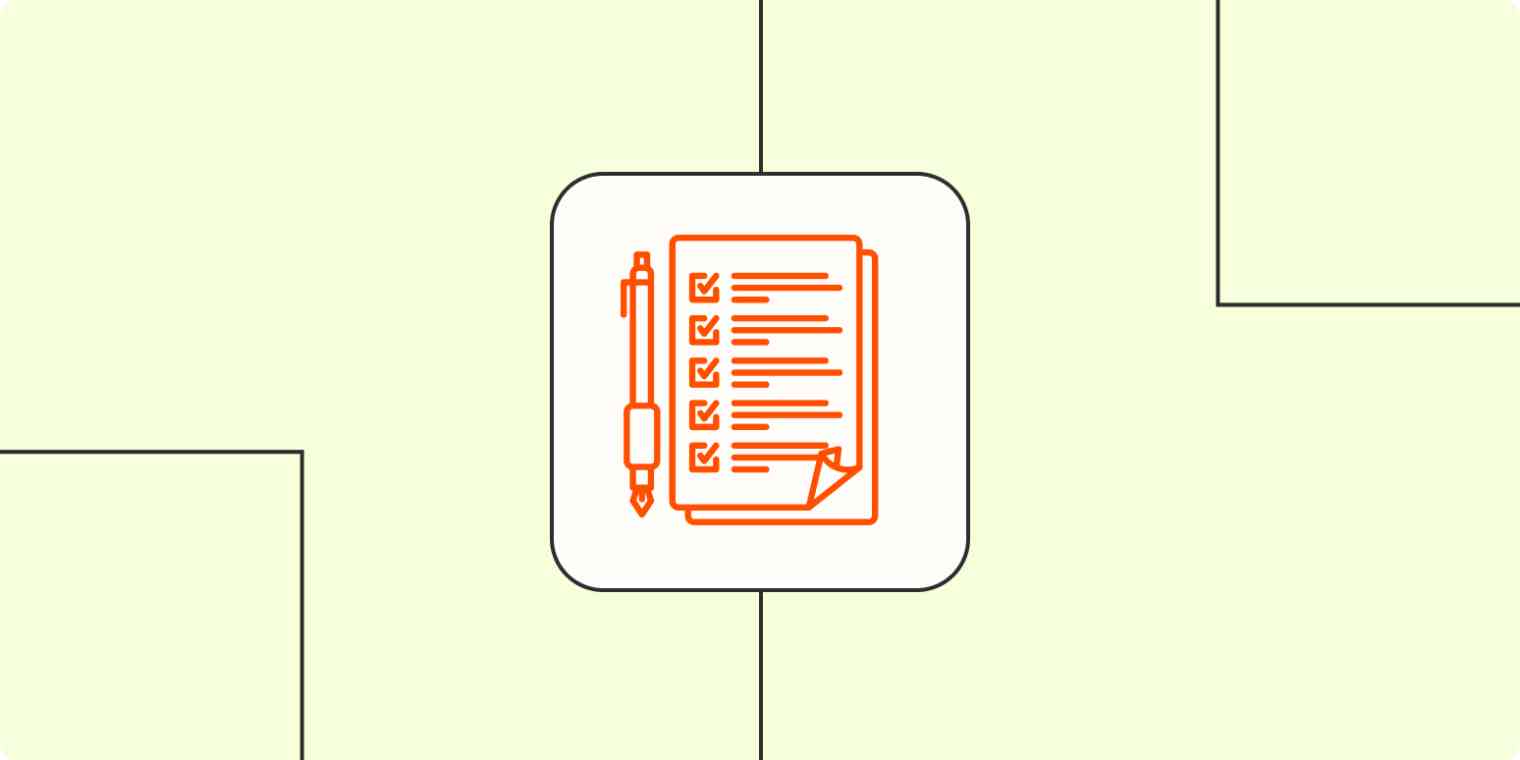It's a new year, and I feel a bit like Aragorn in Lord of the Rings, when the hobbits ask for a second breakfast: Didn't we just have one? Why do we need to have another new year?
Though I bemoan the relentless onward march of time (despite celebrating my fourth annual 29th birthday), I don't bemoan the idea of a fresh start: a time to reflect on the previous 12 months and plan for the year ahead. It's something we do so little of in our day-to-day lives—I mean, who takes the time for personal development during a busy work week in July?
But new year planning is also notoriously pointless. People set goals that are too ambitious, with no real action plan to bring them to fruition, and then abandon those same goals faster than you can say "I'd like to cancel my gym membership."
That's where a personal inventory comes in.
What's a personal inventory? Why should I do one?
Personal inventory is a flexible term that means different things to different people. The term actually originated in 12-step methods like Alcoholics Anonymous, as a way for people in recovery to take accountability for their actions.
But you don't need to be in recovery to benefit from a personal inventory, nor does it need to focus solely on taking accountability. Broadly speaking, taking a personal inventory is the process of taking stock of yourself, your strengths and weaknesses, your values, your goals—and maybe even your failures. It's a way to deepen your understanding of yourself and then chart a path toward improvement and growth.
Besides the philosophical value of knowing thyself, a personal inventory is a great tool for helping you set realistic, achievable goals. Once you understand where you are and what's important to you, you can set goals that make sense for you.
How to take a personal inventory

Although one benefit of taking a personal inventory is that it's a flexible process that you can adapt to your specific circumstances, that can also feel like a huge downside. Where do you even start?
You can use a template, of course, but I personally like to do my personal inventory by hand—it feels more personal that way, and writing things down has always helped cement them in my brain. I start by grabbing a large, clean sheet of graph paper. Then I break my life down into distinct focus areas, like:
Relationships
Health and wellness
Work
From there, I try to take an honest assessment of myself. I start by asking myself a few general, high-level questions for each area:
What things are going well in this area? What isn't going so well? Starting with the positive is crucial because so often we convince ourselves that we're absolute garbage and need to start completely from scratch.
In the last year, what was I most proud of accomplishing in this area? Why? Reflecting on previous growth and improvement is just as important as charting new goals, especially for long-term hopes or habits. Seeing just how far you've come can inspire you to keep developing. And asking yourself why these accomplishments spark pride can help you understand what gives your life meaning and drives you forward.
What do I value in this area? For example, quality time with your partner might be what you value most when it comes to relationships—or alone time with your thoughts might be an important aspect of your wellness.
How much time do I devote to this area of my life every week? If you're frustrated with what you perceive as a lack of progress in a particular area, you should realistically reflect on how much time you're spending on it. This question also provides great context for later steps, when you start mapping out specific goals.
On a scale of 1-10, how satisfied am I with this part of my life? What number would I like to be next year? Number ratings are a great way to sum up your answers to all the questions listed above. They also help contextualize and prioritize any goals you might think up: If you're a 7/10 for your health but a 3/10 for your relationships, you might want to focus more on improving your social life—whereas your health and wellness goals probably need smaller tweaks.
Then it's time to get specific. Within each area, I ask myself more pointed questions. These questions are often really specific. For example, when assessing my relationships I might ask:
Who are my three closest friends?
On average, how many social activities do I participate in per week?
Is there anyone I wish I'd kept up with or cared for better?
What do my husband and I argue about the most?
What makes me feel fulfilled in a friendship or family relationship?
You can set these questions for yourself, and it might take a bit of thinking or trial and error. This is where the flexibility of a personal inventory can be a double-edged sword—so don't be discouraged if it takes you a few tries to figure out which questions give you the most valuable insights.
If you're really struggling with the blank page approach, though, you might want to try starting with a personality test like the MBTI or Enneagram. While these tests aren't necessarily definitive, they can spark some insight into who you are as a person—and what's important to you.
How to use your personal inventory at work
You may be thinking: I'm here for guidance about my professional life—not a self-help column. Hear me out, though. A personal inventory is the best tool I've found for improving my work and figuring out my career.
The truth is, your work is not your life—but it is informed by your life, and it benefits from the same level of introspection and planning as other areas. In other words, you get out what you put in.
When I do a personal inventory, there are a few questions I ask myself when mapping out the "Work" portion:
How do my personal strengths and shortcomings show up for me at work? Knowing how your personality manifests in the workplace is key to understanding why you prefer to work in certain ways or experience particular challenges. For example, I'm an extremely direct person. At work, that can really rub folks the wrong way—and since one of my goals for the coming year is to foster stronger collaborative relationships, keeping this personality quirk top-of-mind will be invaluable.
Are there particular types of projects I can take on to grow where I'm weak? Identifying specific opportunities to develop my weaker skills has had a huge impact on my career growth. Managers especially appreciate when you proactively say something like, "I'd like to develop my skills presenting to and working with senior leadership. Can I contribute to the next project our CMO is leading?"
Does the role I'm in align with my values and goals? Maybe you've been in your role for years and love it, or maybe you've been unhappy in your role for a while and are looking for your next gig. Either way, it's helpful to identify why it is or isn't working for you. Don't be afraid to dig deep here; often, seemingly surface-level frustrations like "I don't like my manager" are actually the symptom of a value mismatch like "I need to feel trusted to do my work, but my current manager micromanages me."
Most importantly, don't think of your personal inventory as a one-and-done deal. It should be something you refer back to—and update—regularly. Personally, I like to align mine with the new year and with my company's performance review cycle in August. That way, I can take a mid-year pause to appreciate how my reflection and planning have resulted in actual change.
A step in the right direction
There are a million tools out there that claim to help you achieve your goals, but the greatest tool will always be self-awareness. Even if you're not ready to make a personal inventory a regular practice, taking a moment to reflect is never a bad idea.
You can also kick the process off by using automation to track anything you might add to your personal inventory. Automatically track feedback (from yourself and others), so when it's time to do your inventory, you have something to work from.
Related reading:





